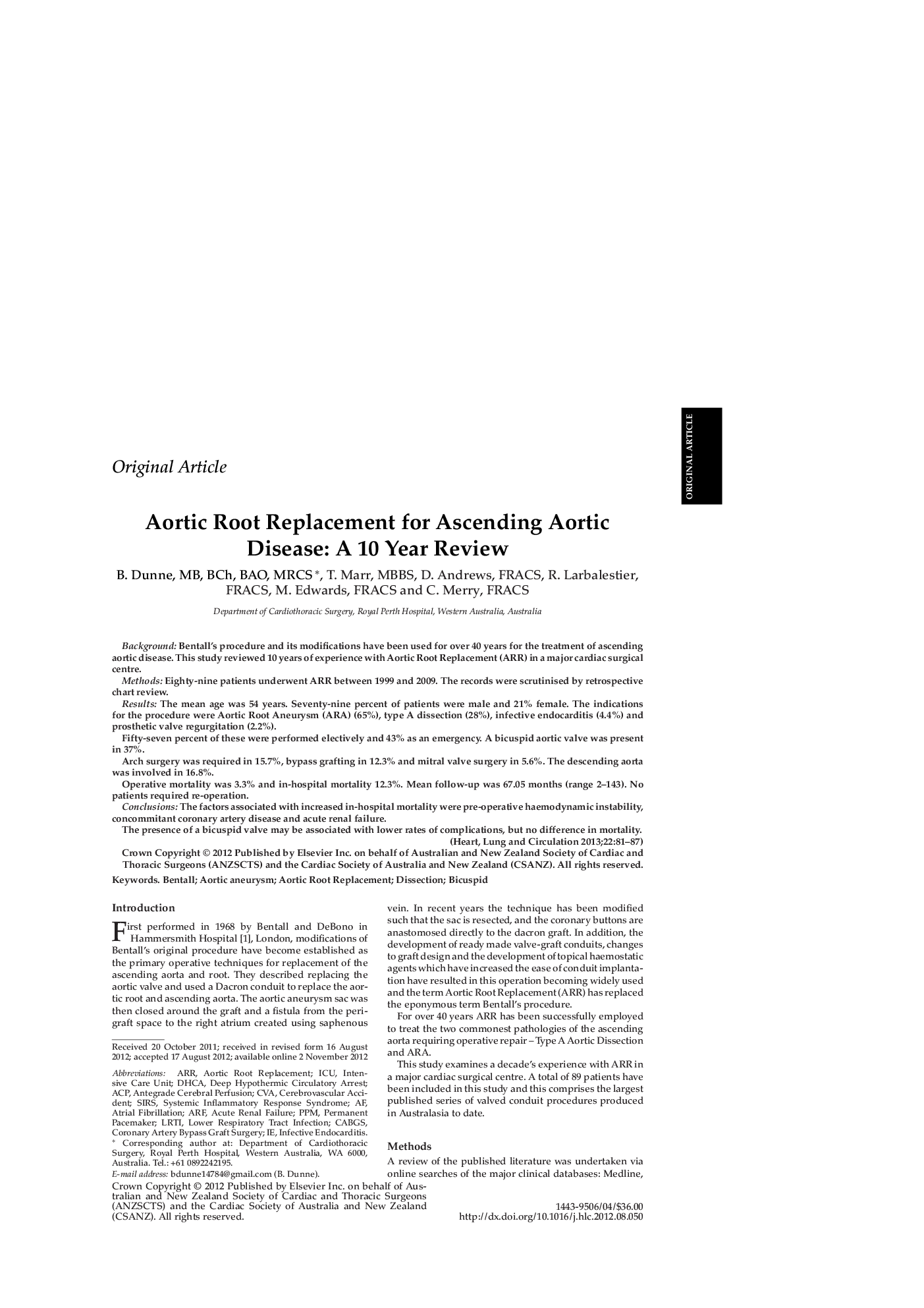| Article ID | Journal | Published Year | Pages | File Type |
|---|---|---|---|---|
| 2919197 | Heart, Lung and Circulation | 2013 | 7 Pages |
BackgroundBentall's procedure and its modifications have been used for over 40 years for the treatment of ascending aortic disease. This study reviewed 10 years of experience with Aortic Root Replacement (ARR) in a major cardiac surgical centre.MethodsEighty-nine patients underwent ARR between 1999 and 2009. The records were scrutinised by retrospective chart review.ResultsThe mean age was 54 years. Seventy-nine percent of patients were male and 21% female. The indications for the procedure were Aortic Root Aneurysm (ARA) (65%), type A dissection (28%), infective endocarditis (4.4%) and prosthetic valve regurgitation (2.2%).Fifty-seven percent of these were performed electively and 43% as an emergency. A bicuspid aortic valve was present in 37%.Arch surgery was required in 15.7%, bypass grafting in 12.3% and mitral valve surgery in 5.6%. The descending aorta was involved in 16.8%.Operative mortality was 3.3% and in-hospital mortality 12.3%. Mean follow-up was 67.05 months (range 2–143). No patients required re-operation.ConclusionsThe factors associated with increased in-hospital mortality were pre-operative haemodynamic instability, concommitant coronary artery disease and acute renal failure.The presence of a bicuspid valve may be associated with lower rates of complications, but no difference in mortality.
